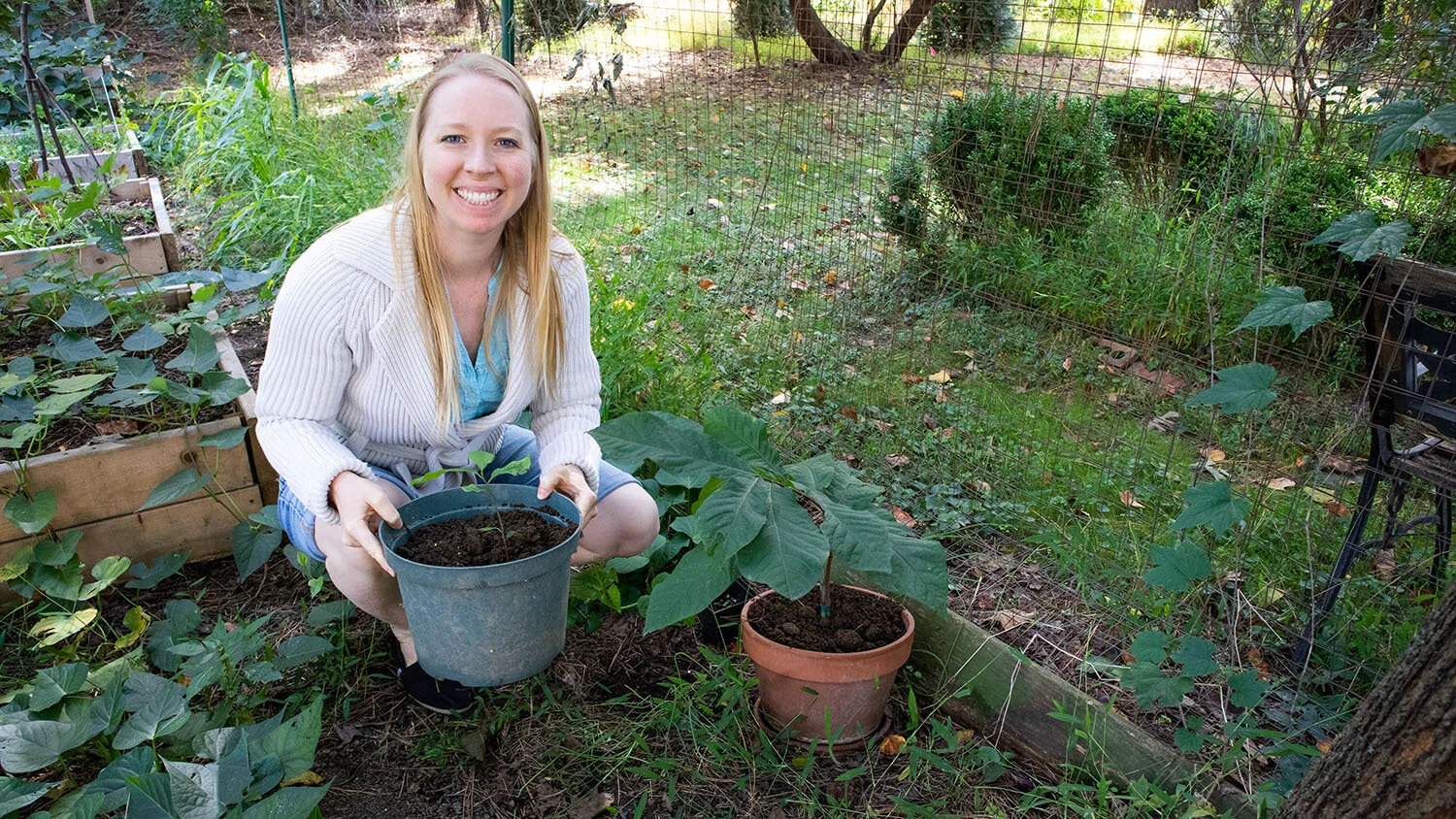Building a Garden Box
Disclaimer: This post contains affiliate links, through which we earn a commission.
Truth be told, gardening is both physically and mentally demanding, takes a lot of time and energy, and doesn't always yield great results, despite the best intentions. In this blog post, I'm sharing some of the wisdom that I've learned over the years regarding garden maintenance, and I'm so excited to share a new strategy that Wiehan is helping me implement! Check out our video from the project here!
My garden space is often overcome by grass and weeds.
I have struggled with gardening a lot over the years, from management of weeds and pests, as well as the inability to produce healthy, robust plants. Each spring, I envision a green space, full of flowers and buzzing bees, ladybugs and butterflies, flying all around big, healthy plants producing many vegetables. Instead, by mid-summer, the humidity and biting mosquitoes have run me completely out of the garden and into the comfort of air conditioning, looking sadly onto a space full of grass and weeds. But on the upside, all my efforts have led to great learning experiences. And the process of gardening can be a lot of fun, as it allows time to be outdoors in fresh air and sunshine, away from screens. In fact, pulling weeds is incredibly beneficial to health, as it creates a microburst of healthy bacteria, promoting skin and gut flora. Therefore, even if my garden looks messy, or doesn't produce much of a harvest, I optimistically see it as my play space.
Through the years, I've dreamed of having more organization and tidiness in my garden space. However, I also have a mental battle between that neat look, and the permaculture ideology that promotes the opportunity for garden plants to grow in the more chaotic way that they'd grow in nature. Despite my best efforts to allow growth to happen in a more organic way, I've come to realize that the plants that I put in pots are much more successful than the plants that I put directly in the ground. "Weeds," however, such as lambs quarters, plantain, dock, chickweed, goldenrod, and dandelions do grow very well on their own in the ground, happy in their own native environment. I find it difficult to pull up these "weeds" on principle, since they are in fact edible, though less appealing than the greens that many of us have been conditioned to enjoyed, such as lettuce, spinach and kale.
10 cubic feet of compost from Mulch and Stone, from 2016.
I know that one of my problems with direct ground planting is that I don't put enough organic matter into the soil. From what I've learned over the years, manure is a necessary component to successful vegetable gardening. Or at the very least, compost can be added to boost nutrients. Theoretically, I could add manure or compost annually at the beginning of the growing season, and maybe I'd have better results. Why don't I do this? Well, for one thing, I have a good problem: my garden space is really large, at 1334 square feet / 124 square meters. Because of the size, I feel overwhelmed with keeping the weeds down, while also contributing to the soil and tending the plants. In 2016, I purchased 10 cubic yards of compost from a local company called Mulch & Stone. They deliver directly to homes in Virginia and Maryland. But it's quite an investment, as I paid $329.
Because of the daunting space that I have to work with, garden boxes sound really appealing. Additionally, I've had great success in the past with garden boxes, as Wiehan made two for me when we were first married, living in South Africa. I filled them using the lasagna gardening method, alternatively layering green matter, such as grass clippings and fresh leaves, and brown matter, such as fall leaves and aged manure. Chard was a particularly successful crop in those boxes although my kale plants were destroyed by aphids.
This year for my birthday, I asked Wiehan if he would spend some time helping me with the garden organization. We did a YouTube search for garden boxes and the one that caught our eye was a video from Off Grid with Doug & Stacy titled How to Build a Raised Bed. Side note: Doug & Stacy are coming to Virginia next week for the Homesteader's of America Conference and they were featured on one of our favorite YouTube channels, Living Big in a Tiny House. On a Saturday morning in September, we went to Home Depot to scope out the wood. Another side note: I have no idea how sustainable the wood from Home Depot is, but I did my best to decipher the codes printed on the wood. If anyone has suggestions for other places to buy wood in the Northern Virginia region, please let us know in the comments! We spent about an hour looking at our options, thinking through the size and pricing. Ultimately, we purchased 6 16-foot planks of Douglas fir, 1.5” thick and 5.5” wide. We were able to take the planks to an associate at the back of the store who cut the wood to our specifications. We needed 8-foot planks x 8 for the length of the box and 4-foot planks x 8 for the width. We also needed 4 beams - one for each inside corner of the box, as a reinforcement. Additionally, we purchased screws and a magnetic drill screw tip. We also had a corded powered drill, but a cordless would have made the job a lot easier. A second powered drill also would have helped speed up the process, as we had to alternate the twist drill bit for making the initial holes in the wood, and the driving bit to drive the screws into the wood. We brought measuring tape with us to Home Depot, which really helped when picking out wood, as the sales signs didn't always match up with the actual measurements. All-in-all, it cost about $80 for the wood and supplies.
The worst part about the build was the mosquitoes!! They would not leave us alone. I wore pants and long sleeves, which minimized my bites, but Wiehan was chowed. We tried Dr. Mercola bug spray, citronella candles and burning smudge, but nothing hindered those bad boys from devouring Wiehan's exposed skin. If you have any natural bug repellent tips for working on the go, please let us know in the comments!
I am so excited to have a beautiful garden box and so thankful to Wiehan for all his hard work toward the project! Now that the growing season has come to an end, this is the time to fill the box using the lasagna method, so that the matter can mature over the winter, ready for planting in February. The leaves are already starting to fall from the trees in our yard, so I'll be raking those up and adding them to the garden box. And I'll also invest in some cow manure and maybe some compost as well. If you have any suggestions for garden organization, let us know! And stay tuned to hear how it goes, and if we decide to build more boxes!
- Christin
Tell us! If you’re a gardener, what’s your preference: containers or direct sowing in the ground?










